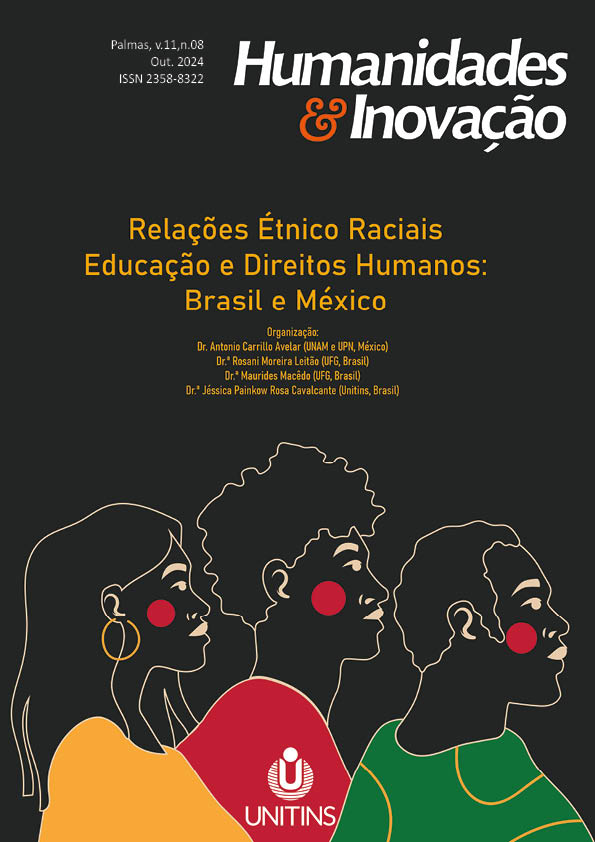HEALTH MONITORING AND USER PROTECTION
Resumo
The aim of this study is to analyze applications classified in the health category and identify how they manipulate the evaluation, prescription, and monitoring of users’ physical activity. The exponential growth of interactive technologies provides a unique perspective on the utilization of services available on mobile devices installed on smartphones, functioning as software for a variety of activities. The health sector has emerged as a promising area for the use of applications that monitor physical activities. This is a descriptive research study with a qualitative approach utilizing a case study method. The findings indicate challenges in evaluating applications aimed at managing physical activities, particularly regarding user evaluation. There is also a gap concerning the legal authorization of the professional category and its regulatory body, particularly in the field of physical education. Another point raised is the shared responsibility regarding the recommendations prescribed to users. This topic relates to the understanding of user protection for those utilizing these services.
Referências
BEN-ZEEV, D. et al. Mobile technologies among people with serious mental illness: opportunities for future services. Administration and Policy in Mental Health and Mental Health Services Research, v. 40, n. 4, p. 340-343, 2013.
BINDHIM, N. F.; HAWKEY, A.; TREVENA, L. A systematic review of quality assessment methods for smartphone health apps. Telemedicine and e-Health, v. 21, n. 2, p. 97-104, 2015.
BITTAR, C. A. Reparação civil por danos morais. Editora Saraiva, 2017.
BRASIL. Lei nº 9.609 de 19 de fevereiro de 1998a. Disponível em:< http://www.planalto.gov.br/ccivil_03/leis/l9609.htm>. Acesso em: 09 mai. 2019.
BRASIL. Código de Defesa do Consumidor. Lei nº 8.078, de 11 de setembro de 1990, Art. 14º, § 4º. Disponível em:
CAFRUNI, C. B.; VALADÃO, R. C. D.; MELLO, E. D. Como avaliar a atividade física?. Revista Brasileira de Ciências da Saúde. São Caetano do Sul: USCS. Vol. 10, no. 33 (jul.-set. 2012), p. 61-71, 2012.
CAMPOS, V. F. Gerenciamento da rotina do trabalho do dia-a-dia. INDG Tecnologia e Serviços, 2004.
CASTRO, D. M. S. et al. Exercício físico e gravidez: prescrição, benefícios e contra-indicações. Universitas: Ciências da Saúde, v. 7, n. 1, p. 91-101, 2009.
CARVALHO, T. et al. Posição oficial da Sociedade Brasileira de Medicina do Esporte: atividade física e saúde. Rev Bras Med Esporte, v. 2, n. 4, p. 79-81, 1996.
CONFEF. Conselho Federal de Educação Física (2010). Disponível em:
CRESPO, A. N. et al. Uma metodologia para teste de Software no Contexto da Melhoria de Processo. Simpósio Brasileiro de Qualidade de Software, p. 271-285, 2004.
FABIANI, M.T. O código de ética do profissional de educação física (2009). Disponível em:
HAMARI, J.; KOIVISTO, J.; PAKKANEN, T. Do persuasive technologies persuade? – A review of empirical studies. In Spagnolli, A. et al. (Eds.), Persuasive technology, LNCS 8462. Springer International Publishing Switzerland, pp. 118–136, 2014.
JONES, N.; MOFFITT, M. Ethical guidelines for mobile app development within health and mental health fields. Professional Psychology: Research and Practice, v. 47, n. 2, p. 155, 2016.
KREBS, P.; DUNCAN, D. T. Health app use among US mobile phone owners: a national survey. JMIR mHealth and uHealth, v. 3, n. 4, p. e101, 2015.
MARQUES, A.; ANDRÉ, J. Avaliação da atividade física: Métodos e implicações práticas. Boletim Sociedade Portuguesa de Educação Física, n. 38, p. 67-75, 2014.
MORAES, M. C. B. Danos à pessoa humana: uma leitura civil-constitucional dos danos morais. Maria Celina Bodin de Moraes, 2003.
MONTE, W. S.; DE BORTOLI, R.; LUCENA, S. E. F. Protection of Users: An Analysis from Product and Process Patents. International journal for innovation education and research, v. 6, p. 40-54, 2018.
SILVA, C. V. C. O conceito de dano no direito brasileiro e comparado. Revista de Direito Civil Contemporâneo, Rio Grande do Sul, v. 2, n. 1, p. 333-348, 2015.
NUNES, L. A. R. Comentários ao código de defesa do consumidor. Editora Saraiva, 2017.
SILVA, L. A. et al. Estatísticas de patentes e atividades tecnológicas em Minas Gerais. SEMINÁRIO SOBRE ECONOMIA MINERIA, v. 9, 2000.
SPAHN, A. And lead us (not) into persuasion…? Persuasive technology and the ethics of communication. Sci Eng Ethics, v. 18 n. 4, 633-650, 2012.
STOYANOV, S. R. et al. Escala de classificação de aplicativos para dispositivos móveis: uma nova ferramenta para avaliar a qualidade dos aplicativos para dispositivos móveis de saúde. JMIR mHealth e uHealth , v. 3, n. 1, p. e27, 2015.
TIBES, C. M. dos S.; DIAS, J. D.; ZEM-MASCARENHAS, S. H. Aplicativos móveis desenvolvidos para a área da saúde no Brasil: revisão integrativa da literatura. Revista Mineira de Enfermagem, v. 18, n. 2, p. 471-486, 2014.
YASINI, M.; MARCHAND, G. Mobile health applications, in the absence of an authentic regulation, does the usability score correlate with a better medical reliability?. In: MedInfo. 2015. p. 127-131.
VAZ, A. F. Regulamentação da “profissão”: desejos e mal-estares. Movimento (ESEFID/UFRGS), v. 7, n. 14, p. 20-27, 2011.
WHO - WORLD HEALTH ORGANIZATION. mHealth: new horizons for health through mobile technologies. mHealth: new horizons for health through mobile technologies., 2011.
A submissão de originais para este periódico implica na transferência, pelos autores, dos direitos de publicação impressa e digital. Os direitos autorais para os artigos publicados são do autor, com direitos do periódico sobre a primeira publicação. Os autores somente poderão utilizar os mesmos resultados em outras publicações indicando claramente este periódico como o meio da publicação original. Em virtude de sermos um periódico de acesso aberto, permite-se o uso gratuito dos artigos em aplicações educacionais, científicas, não comerciais, desde que citada a fonte (por favor, veja a Licença Creative Commons no rodapé desta página).











